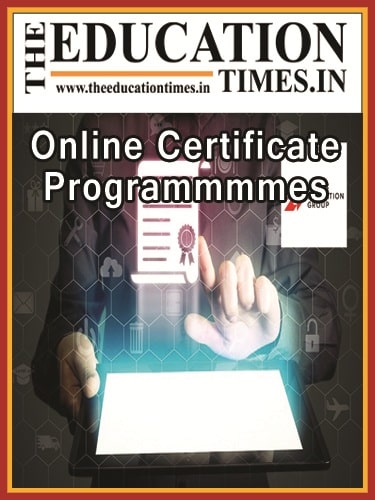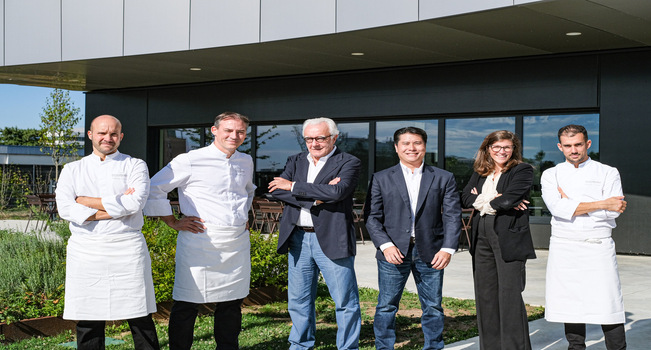By Dr. Anupam Narula, Professor of Marketing at Amity University, Uttar Pradesh (AUUP), Noida Campus
Learning is a lifetime pursuit for most, whether it is to learn a functional skill or a new recipe. Most of individuals want to keep updated and learn new things for both personal and professional lives. No one really knows it all—because “All” is a moving target. No matter what age-based generation the learners are in, in current scenario they have one thing in common: they have unprecedented access to information and learning. And although the new generation experienced everything on a keyboard, but every generation is affected by the capabilities and reliance on technology.
Innovation is borne of challenge and uncertainty is the foundation which helps to grow, thrive, and create disruptive change that can impact the world. Today’s learners demand more from their education and employers, so the current educators require skills-sets that focuses on the target audience expectations and to fulfill it with agility and empathy.
In knowledge economy one element of learning alone will not lead to great success—but a combination or blend of learning methods fulfills the demands of numerous educational stakeholders. Strategy is the roadmap;learning equips students and trainers with the skills and competencies they need to achieve the strategy. With the right use of technology, the educators can decide which educational methods will best serve long- and short-term goals of learners. The success of universities and higher education institutions will depend upon how they integrate the three elements—learning, strategy, and technology—with each other that can lead to their success in the long run.
The recent hope from the vaccine bring an end to the pandemic may be in sight, it’s increasingly looking that the shift to online education is there to stay. The physical classroom won’t vanish anytime soon, but universities after reopening have started working in hybrid mode in -person as well as in remote learning in the new normal. If done rightly, remote learning can help in addressing some of the limitations of in-person methods and create a fairer, more equitable environment—but only if educators make it a priority to address their students’ and trainer’s needs.
What are Opportunities for Hybrid Learning?
The world of learning and technology offers many opportunities for hybrid learning, the one aspect to keep in mind is that learning is learning (and not that technology inevitably leads to learning). The learner or student must remain the central focus and learning professionals must identify the competencies needed for strategic success, understand the available technology options and the pros and cons of each, and create course design options to meet different learner styles and needs.The ultimate blend ensures that key result areas (KRA’s) align and coordinate with the learning objectives of the university and HEI’s. Making the right choices in a systematic way helps ensure that learning experiences are engaging, and learner centered—and that learners can understanding first time from the instructor.
The Internet offers many ways to learn. The Google helps to learn something new or to validate what learners already know, the world of technology is multiplying the ways the learners can learn and receive content. This has provided an unlimited wealth of information, interaction, and outreach opportunity at fingertips.Just through this one method, the learners can have targeted learning delivered in many ways, including webinars, collaboration, synchronous or asynchronous chats, blogs, guest speakers, communities of practice, and more distribution options yet to be created. The point is that the options have increased tremendously, and the educators must align the learning content with their respective course plan to ensure that the learning strategy uses all the distribution methods available as per the requirement of learners.
What Hybrid Learning Mean?
Hybrid learning or Blended learning is a way of combining traditional in-person classroom experiences, and digital course delivery using technology simultaneously that emphasizes the best distribution option for each learning objective.
With university campus re-openings many instructors have found themselves planning—perhaps for the first time—the hybrid courses that will mix remote and in-person sessions. In many cases, these instructors must quickly learn to redesign a course that is equally effective for students in remote as well as in-person classroom sessions.
Which Necessary Technologies are required for Hybrid Learning?
To apply most hybrid approaches to learning the university or HEI’s must be able to support certain bare minimum technologies. The technology requirements include Internet access with enough bandwidth, so that programs run smoothly; access to professional websites; a web-based learning management system (LMS) or learning content management system, and the ability to launch e-learning courses. For virtual instructor-led courses, access to a webinar or virtual classroom tool is needed (such as WebEx, Zoom, MS Teams or Adobe Connect). And with the popularity and efficiency of video as a learning tool, the instructor should have some way to launch video, such as through YouTube, a streaming service or an LMS. Premium universities and HEI’s are required to equip all their lecture halls with state-of-the-art IT and interactive multimedia equipment for the new world of future education.
How is Hybrid Learning Delivered?
As mentioned in the beginning, hybrid learning is defined as combinations of content,media, education delivery methods, and a variety of direct and indirect instructor-learner interactions. There are many options for providing the students with blended education. The course must have pre-work, mentoring during or after teaching, or course or topic resources available for access anytime? These approaches are hybrid learning concepts. The key is to choose the delivery mode that is most effective for the audience, realistic and the education purpose.
Hybrid learning mode include what material to keep in the live sessions(synchronously),what material to ask students to engage with on their own time (asynchronously), and what material to simply cut out.The instructor will judge through their experience which modalities will best serve the content and the aim of learners to produce the desired performance results.
The instructor must ask themselves two key questions to help steer their thinking?
- How should the instructor split the content into synchronous and asynchronous material?
- How can the instructor leverage asynchronous learning to help conduct better synchronous sessions?
What most people think of as a hybrid format is having a combination of online learners and people in a physical room, in-person, where instructor can see them—even if it is at six feet, or two meters.Let us assume that half of the students only log in remotely, and they are going to engage with each other in a virtual classroom and the other half are physically present in the classroom together. Instructors have a mix between the virtual and in-person students.
Now think how the instructors will arrange discussion groups, or any type of activity that requires interaction between students?
- Synchronous and asynchronous material: Planning for a live online session is very different from thinking about content that is going to be delivered asynchronously. With a synchronous session, the instructor can plan for a 90-minute online session of simultaneous participation, with all learners logging in at the same time. The instructor has discussions, Q&As, debates, breakout rooms, and all other kinds of tools at their disposal. And that variety should be part of the course design: How do instructor take advantage of everybody’s presence at the same moment in time? The instructor has a live cohort-based course, which experiences something unique together, and this will be different for students who watch the recording later. In flipped classroom, there is distinction between theory and practice—students learn the theory by themselves and then come prepared to the virtual classroom to practice together the concepts through exercises, discussion of articles, videos case analysis and putting things into practice with a hands-on component.
- Asynchronous learning to help conduct better synchronous sessions: Conversely, the instructor can leverage asynchronous learning to help conduct better synchronous sessions by distributing the course material in advance to students as per session plan on email or WhatsApp group formed of the class. The material to be taught asynchronously, be it through videos, relevant articles, case lets, quizzes, or competitions must be concise and should be planned by the instructor in advance so that students complete the self-readings at home before the class. Instructor should keep the videos short,keep articles around a five- to seven-minute read; and the objective is that all the students should come prepared to work on live problem solving during the synchronous class time.
How is Effective Hybrid Course Designed?
The hybrid learning course needs to be tailored to not only different learning styles but also different paces of learning as per credit system of courses in semester or trimester method adopted by universities and HEI’s, respectively.When instructor puts the course together,they should think in terms of what students are going to do or deal with on any given scheduled class, the instructor should ensure and plan a course design that engages the student by helping him to understand the basic concepts about the course and the interested student can go in details through asynchronous learning with the help of instructor or available technology. The six points to design the hybrid courses as per the requirement of learners are as follows:
- Use videos and articles for asynchronous learning.The students have access to videos and articles using WhatsApp groups or links shared by the instructor which is where they get most of their theory and example. The instructor should not rely too heavily on textbooks and does not require too much reading or presentation, they should mix it up with short video case lets and articles that students can watch over.With video and article, the instructor can take material out of the classroom, so that students can approach it asynchronously on their own, leaving synchronous sessions for discussion and debate to use the class time effectively.
- Use Case Studies to drive class discussion. The management classes relies heavily on case discussions, which are inspired by practice: real companies, real data, real problems that protagonists face across all areas of expertise. This is an example of how the instructor can combine in practice and theory in their classroom settings.
- Use students led Labs to learn independently, together. The self-paced engineering labs, where the students, on their own or with a partner, work through code or an assignment that was given during a synchronous session. It may sound like an odd combination—a live session with students working independently—but it allows them to learn at their own pace.The instructor can pop in either virtually or in person—to check how students are doing and see if they have any questions. Occasionally, they can come together as a group and spend 10 minutes debriefing to solidify those lessons they learned on their own. At the end of the lab, the instructor can ask a student to send a solution with the steps included, then the same can be shared with the rest of the class. That way, they also have some resolution at the end of the lab sessions, driven from the students.
- Use Coding jobs for students to learn from one another. The analytics class has a coding element, for which students are encouraged to develop a “Coding dojo” mindset, inspired by martial arts. It is an immersive experience where one or two people are “in the dojo,” debating, discussing, and trying things out, and the others are watching, providing input, supporting, and encouraging. Then instructor take turns and somebody else shares their screen and is in the dojo. It is a student-led approach that allows them to understand their capabilities in a constructive environment. If the class does not feature coding, the dojo model can also be used for class that explores practice. The instructor should supply all the guidelines to the exercise in advance so that they can go through it all before class and come ready to engage in a conversation.
- Use projects group presentation at the end of the course. Minimum two sessions should be allotted at the end of the course to allow student groups to present their work on their final projects. The instructor does not have to devote a lot of time to this, just they have to be conscious of students’ practical concerns—When do they get together? How do they meet? How are they going to present their results and their work to the entire class? The group projects should be allotted to students at the beginning of the course sessions so that they get enough time to work on it.
- Use methods to keep students fresh. While designing a course, it is important for instructor to ask themselves, ‘When can they insert activities, games, hackathons, anything that breaks the monotony of the flow’? Every few weeks, the instructor should do something different: an exercise, a group presentation, an article or a video case let. These things keep excitement and engagement up with the learners.
The Dos and Don’ts of Hybrid Learning
Here are some approaches instructors might want to focus on, or at least think about a little bit more in terms of execution in hybrid learning:
- Do focus on preparation. When an instructor plans the course, they should always ask themselves ‘What are students doing to prepare for class?’. The instructor should make sure that students who join the class either remotely or in person are engaged and ready to have a conversation and ask those questions they need an answer to.
When instructor think about the preparation, think about all kinds of things that can even have traditional material such as academic articles, news, and online textbooks; and the instructor can also mix it up with things like games, pictures, videos,and quizzes.
- Do keep classes varied.Break the class into different components and try to keep it moving. Spend a few minutes in breakout rooms, then show a video, then have a student share their screen. Do not linger on any one component for too long during hybrid teaching.
- Do allow time to form connections.After class, instructor should encourage students to reflect on the material, which allows for that higher level of engagement to bring in the continuous connection that all are losing a little bit in the virtual world. Those reflections can be done through any other chat platform, or it can be as simple as starting the next class with takeaways from the previous one. The instructor should create a link so it is easy for students to feel like they belong, like they are part of the course.
Here are some approaches the instructors might want to avoid in hybrid learning:
- Do Not assign too much reading.Remember that PDFs, Word files or presentations can be exhausting on the eyes.Students cannot read so much so try to give limited reading material in the synchronous class.
- Do Not get caught up on the technology.It is fine to experiment with teaching tools, but take it gradually; see what works, and do not try too much too soon. Simplicity has a lot of power. If there is a student the instructor has not heard from for a while, they can send them a little message in the chat and let them know the teacher is going to invite them into the conversation. Even online, engagement does not necessarily have to be heavy on the technology; it is all about what gives you the confidence to focus on the content, and not on all the other things.
- Do Not try to cover too much.Plan for less. If instructor is really engaging with the students in a hybrid model, that will typically slow down to the point where they must consider other ways of delivering the content that will complement the session. Just be thoughtful about that. Do not expect to cover everything that instructor normally covers in traditional class. Plan differently and assign certain activities in different ways so that students feel satisfied that they will walk away having learned something and not feel rushed out the door.
The future classrooms in universities and HEI’s are required to be completely reinvented with a range of modalities designed specifically to support the content being taught in the classroom as per the preferences of target audience in a creative way. All lecture halls need to be equipped with state-of-the-art IT and interactive multimedia equipment’s to enable all three modes of teaching which includes 100% in-person teaching (face to face teaching at the distance of six feet or two meter), hybrid teaching with groups of in-person and remote students simultaneously and completely remote teaching (which is useful for classes like sales and distribution management & negotiation skills where participants need to see each other’s faces). So, the teaching approach will continue to evolve as educators constantly think about how to redesign and re imagine the classroom experience- not just to address a challenge presented by the pandemic, but to think creatively about how the content in the classroom can best be taught in the long run.


































